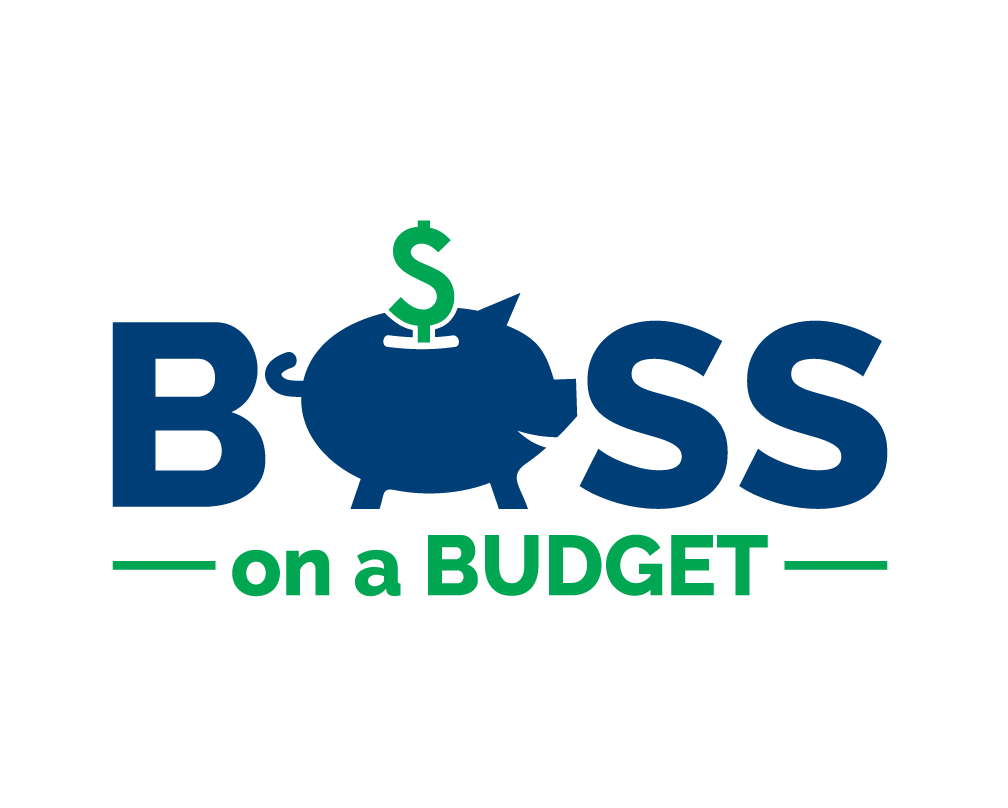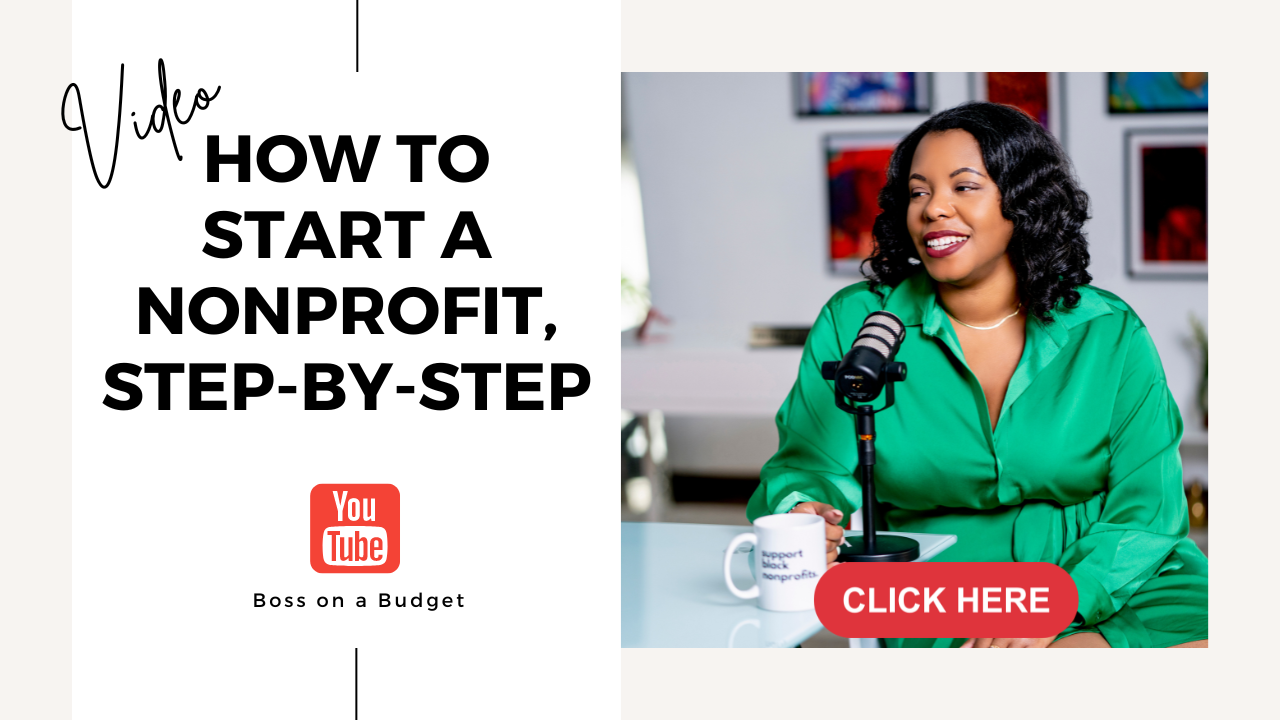How to Start a Nonprofit That Doesn't Fail: 8 Steps + Checklist
From the moment Tracy was a teenager, she had a dream to help others in the same situation as her. The neighborhood she grew up in wasn’t the best, but she had committed teachers and mentors to get her through school. She vowed that when she got stable in her life she would give back to the same community that shaped her. She saw the negative experiences of other teens who didn’t make it out. She wanted to change that, and she just knew a nonprofit would achieve that.
For years, she had dreams of starting an organization that provided mentors to young people to avoid poor outcomes like early pregnancy or incarceration. Every time she got a free moment she would write out her notes. She spent many late nights thinking through how things would look. She dreamt of the day she could run her own organization and finally fulfill her dream.
Does that sound familiar? Starting a nonprofit can be one of the noblest things you could ever do, but most people don’t realize just how difficult and downright confusing it can be to navigate the startup process. Many people start with the best of intentions, but often don’t carry through with their visions, or they encounter barriers that cause them to stop prematurely.
It often takes many years for nonprofit founders to get their footing, and only after plenty of bumps and bruises. So in today’s post I want to offer 8 straightforward steps to start a nonprofit, so you can stop stalling and finally fulfill your dream.
I’ve written a couple of blog posts HERE and HERE about what to consider before forming your nonprofit. Visit those posts before reading this post so you can know what you’re really getting yourself into. This post is meant to outline a plan to get you from dream to reality once you’ve decided a nonprofit is the right path for you.
*for a detailed list of all the key areas of nonprofit startup, download my startup nonprofit checklist below.
STEP 1: Start with a Unique Idea
Before you complete any action, first flesh out your idea. Ask yourself the following questions:
What is the need I want to address and how will I meet it?
How will my program help or benefit someone else?
Is it a compelling enough idea that someone would want to support?
Is this idea already being done?
Is there space for me to step up and create my own lane?
The biggest key to your success is your ability to convince others you have a worthy cause. If there are many different organizations doing the same work as you, that means it will be that much harder to convince others to support you. So the question becomes….how can you stand out among the rest? (And honestly, if other organizations have their services on lock, by all means, consider another idea just to save yourself unnecessary headaches).
If you haven’t yet identified a unique space, that doesn’t mean you can’t still pursue your dream. Just make sure you brainstorm ways you can distinguish yourself from other organizations. This is also referred to as finding your niche. Maybe you want to serve a population or geographic area that’s been ignored. Or, maybe you have a solution to a common problem that other organizations don’t have. There are still ways to provide a service, even in a crowded space.
If you need clear step by step guidance for outlining a unique idea, use my nonprofit workbook, which includes a worksheet that helps you flesh out your idea.
STEP 2: Create Your Team
Your success depends on how strong your team (your board of directors) is.
The board of directors is the governing body of your nonprofit. They are the people who set the direction of your organization. They are instrumental to the development and sustainability of your organization. Don’t take this step lightly. If you don’t have the right kind of support from the beginning, it can delay your progress.
Make sure you have the right mindset when choosing your board. You’re not begging for people to serve, it is a privilege to serve. Always remember that!
This group will help create lasting change in your community. They must take their service seriously by taking the initiative to learn what makes a strong board and showing up every single time. Remember that you’re in the startup phase - the norm for other boards will not be the same for you. You’re trying to launch a program from the ground up. That means your team will have to do a lot of the upfront work, and perhaps even provide client services in the beginning. You should have a tight team that is unrelenting and not afraid to work hard to see your organization win.
Recruit board members who have skillsets and experiences that you desire for your board. It is wise to recruit at least one person with a strong accounting or financial background. If you need help with a recruitment strategy, try my board recruitment toolbox.
One more thing. Board members HAVE to fundraise and they HAVE to be comfortable speaking about your organization. When you recruit, make sure those responsibilities are clear from the beginning.
As a board, focus on the following items in the beginning:
Creating your by laws, which will cover the operating procedures of the board
Outlining your board’s policies
Determining your financial and accounting procedures
Setting a regular meeting schedule
Working on your roadmap for year 1 (more about this later)
STEP 3: Create a Vision and Mission
As a board, develop your vision and mission statements, and your organizational values. This is also time to select a name. Make sure it’s a name that captures the essence of your mission, and easy to say (think about how many times you will repeat your organization’s name in a lifetime.) Don’t pick something super difficult to say!
Make sure the name is not already in use. The last thing you want is to create branding materials with your name and logo, and then have someone threaten to sue you for using their name. As you progress and solidify your plans, you may consider trademarking your name to protect your name and brand from others taking it over.
When you name your organization, also do a quick Internet search to see if anyone is using the domain. Think about your website name and once you’ve decided on a name, purchase the domain as soon as possible.
STEP 4: Incorporate Your Nonprofit
The next step is to incorporate your organization in order to conduct business in your state. Investigate the forms and fees required to set up your business. To make things as simple as possible, be sure to incorporate as a nonprofit organization. The name that states use for nonprofits may differ (for example, in some states, it may be called a nonstock corporation) but the general description is an organization made for exempt purposes or a charity that provides services to the public.
Harbor Compliance has a great resource page that identifies individual state requirements.
As you wait for confirmation on your organization, it’s the perfect time to work on your case statement. A case statement identifies the need for your services and makes the case for why your organization deserves support. Use the following questions to build your case statement:
What are the pressing needs of the people/things you want to serve?
Why is there an urgent need?
Why and how is your organization the best organization to meet that need?
How do you plan to address those needs?
What happens if you don’t meet those needs?
It’s really helpful to put this into a separate document, because this will be the basis for communications and appeals to donors, as well as grant applications. Another helpful idea is to include a story that makes the point of why your organization is needed. People respond much better to emotions and real-life experiences, so it’s wise to share compelling stories from the very beginning.
STEP 5: Plan Your First Year
At this point, your board should shift into high gear - you should focus on 4 key items: your strategic plan, organizational budget, fundraising plan, and communications plan.
“At this point, your board should shift into high gear - you should focus on 4 key items: your strategic plan, your operating budget, your fundraising plan, and your communications plan. ”
Strategic Plan
I use the term “strategic plan” loosely here. Strategic planning for established organizations is actually an expensive long-term planning tool to help nonprofits identify the strategic direction of their organization. For new nonprofits, I recommend you follow some of the principles of strategic planning (like doing a SWOT analysis explained below), understanding the needs of your community, and developing an action plan.
It’s important to have a 3-5 year plan, but it’s even more important to have a one year plan, which will provide the space you need to adapt quickly. You’ll find in your first year, that you may want to switch up your programs, or narrow or broaden your population. At this point, don’t commit to a full, traditional strategic planning process because you’re still super new and your priorities will naturally shift as you try to find your place.
Analyze your strengths and weaknesses as an organization, the potential threats and the opportunities presented by those threats (a traditional SWOT analysis). Again, think about what you uniquely bring to the table and use that as you design your next steps. My nonprofit business bundle includes a workbook which helps you develop your SWOT analysis.
Outline 3-5 main organizational goals that you want to accomplish over the next year. You may want to conduct a certain amount of services, serve a particular number of clients, launch a program, or establish community partnerships. From those goals, identify the targeted objectives and strategies/action steps you want to put in place to reach those goals.
Let’s walk through an example.
One of your organization’s goals could be to increase the number of donors to your organization. An objective would be to gain 50 individual donors by the end of the year. An action step is to ask your board to solicit their family and friends for their first donations to the organization.
Organizational Budget
Next comes the money, which includes creating an organizational budget. Budgeting should flow directly from the goal planning process. The budgeting process allows you to assign costs that are associated with your goals.
So following along with our example, If you know you want to reach donors, you may need to purchase stamps and paper for a letter writing campaign. Or, if one of your objectives is to conduct a direct mailing, you may need to purchase a list of addresses.
For program costs, think about the weekly or monthly staffing cost to run your programs. Also, think about the materials you need for your program to run smoothly. Don’t forget administrative costs like filing fees or insurance. Go through each of your goals and chart out the costs. (it always helps me to brainstorm using a white board or flip chart paper. That really makes things official!)
When thinking through your expenses, you may way to consider the following categories:
Staffing costs
Rent and utilities
Vehicle costs
Equipment
Supplies and materials
Printing and copying
Telecommunications
Travel and meetings
Marketing and advertising
Training
Contractors (including independent contractors)
Meals and entertainment
Insurance
Miscellaneous
Fundraising costs
Great! Are you intimidated yet? Don’t be.
Fundraising Plan
It’s not enough to figure out the costs. Now you have to figure out how you’re going to pay for everything. Set a fundraising goal for your organization to ensure you will have the revenue needed to run your programs. See this post on fundraising strategies for nonprofits and a way to create a blueprint to raise at least $30,000 in your first year.
When fundraising, make sure you have the correct disclosures for fundraising, and that you apply for charitable solicitation in your state (my checklist provides more details).
Communications Plan
One item people tend to think about much later, is their communications plan. Think about your intended audiences and how you want to reach them. Your audiences may be volunteers, donors, funders, partners, etc. Think about all the different strategies you will use to keep a conversation going and to make sure you’re top of mind for them. My nonprofit startup workbook includes a worksheet to help you outline your communications plan.
STEP 6: Apply for Tax-Exempt Status
At this point, it’s important to gather important documents to prepare for your tax exempt status.
Gather your articles of incorporation, by laws, and conflict of interest policy to apply for tax-exempt status (if your board decides that’s the direction you want to go). Most nonprofits that provide some kind of education, social, or health services apply for 501c3 tax exempt status which allows donors to claim a tax deduction for their donations to the organization. It also allows you to be exempt from federal income tax. Note that there are other types of tax exempt statuses from the federal government for lobbying organizations, associations, etc.
There are two forms you can use to apply for tax-exempt status: the 1023EZ and the 1023 form. The 1023EZ is a streamlined version, designed for smaller organizations that do not have a large amount of assets, and who do not anticipate making more than $50,000 a year for the first 3 years after obtaining their tax-exempt status. Use this eligibility worksheet to determine if you can apply using the 1023EZ form. As of 2020, the fee for the 1023EZ is $275 and the 1023 is $600. It usually takes between one to six months to be approved.
STEP 7: Begin Tracking Data
Think about the short and long term outcomes you want to achieve for your participants. Many people use logic models to outline their programs, which include the inputs (resources that are needed to run the program), activities (the activities involved with running your programs), outputs (number of services provided) and outcomes (desired changes in behaviors, attitudes, skills, or knowledge).
From the very beginning, you should be prepared to track participant data so when you start seeing results, it will be easy to quantify those results and report them back to your supporters and funders. Think of how you will collect data on an ongoing basis.
STEP 8: Prepare to Hire Staff
It’s very unlikely that in your first year, you will be prepared to hire paid staff. But it’s always a good idea to think through what needs to be in place to ensure you can transition to paid staff when the time is right. This includes thinking through a human resources (HR) manual, staff hiring procedures, staff paperwork and ongoing filings, and staff benefits. My nonprofit startup workbook includes a link to a sample HR manual.
So there you have it!
This may seem like an overwhelming process, but if you take the right steps to prepare your organization, you will be able to withstand those tough periods and obstacles that are bound to come your way. Stick to my checklist and workbook, and it will help you navigate your first year with a clear direction.





